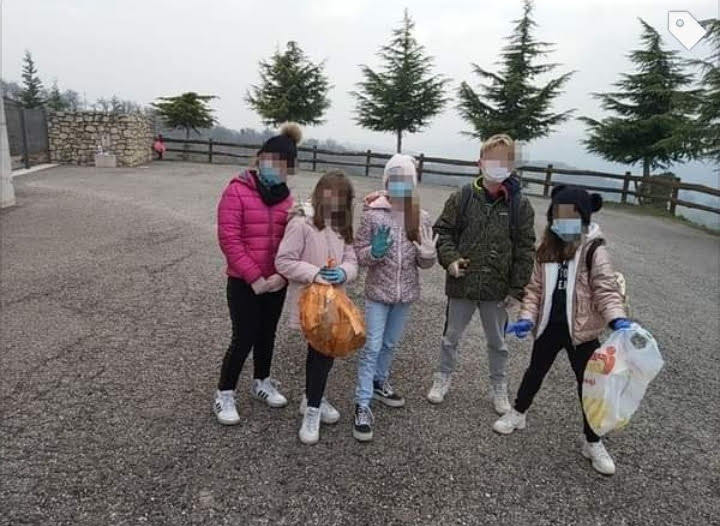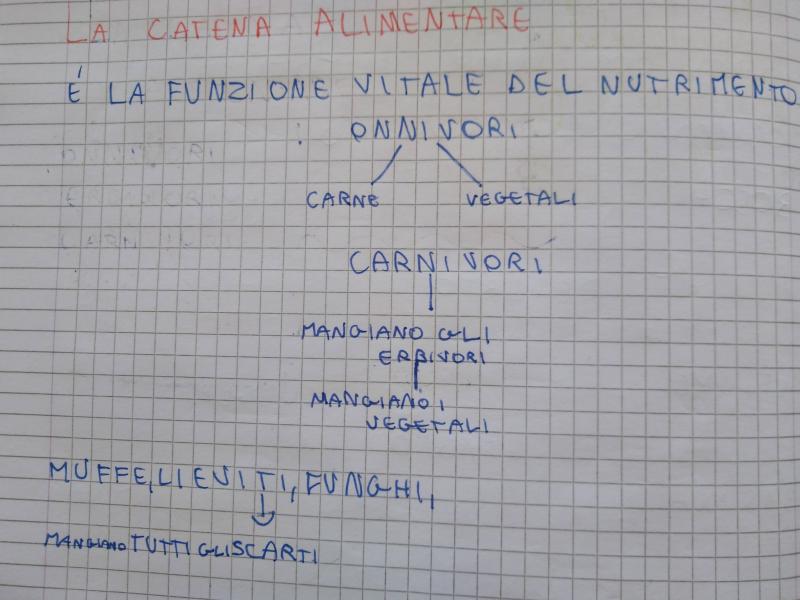Author: Multigrade class IV + V, San Rocco Primary School, IC Bosco Chiesanuova, Verona (IT)
PARTNER: Multigrade class IV + V, “I.S. Abbé J.M. Trèves”, Breuil Cervinia, Vallée d'Aoste (IT)
Introduction

Children take care of our planet (copyright free)
Technology has always been part of man's life but in recent years the speed of technological changes and their massive diffusion in the population has increased. It has become impossible to avoid any contact of children and young people with digital media which are very useful tools but hide risks. Among the dangers of the internet, the use of social networks is increasingly emerging; for young people born after 2000 it is obvious to have to do with social networks which are social network services whose purpose is the management of social relationships. This abuse of multimedia relations has led to a progressive removal from the territory. Slowly we are losing the knowledge of: characteristics, resources, traditions ... In this Seedquest you will focus on the beauty of the territory in which you live to discover: the characteristics, the resources, the problems and how to protect and enhance it. After having discovered and studied the resources and the environment in which you live, try to identify which behaviors and attitudes could be useful to enhance and take care of the "land" in which you live. Eventually he thinks he realizes a way to advertise this new lifestyle.
Learning Objectives
- Explore your territory to identify its riches and problems
- Make a notebook with the flora and fauna typical of your area
- Think and implement behaviors to care for and enhance your environment
Task

Hunting for the treasures of our territory (copyright free)
Perform these tasks:
1. Brainstorm the term "biodiversity".
2. Research the meaning of the term biodiversity online
3. Interview parents and grandparents on what are the elements that characterize the biodiversity of the territory in which you live.
4. Explore the environment in which you live and with the help of an individual expert, the resources of your territory and the problems.
5. Make a small book with pictures and comments on the flora and fauna of your environment.Draw comics to combat environmental pollution
6. Take care of your life environment: collecting waste, burying new plants, creating a vegetable garden.
7. Collect traditional family recipes, identify which are the typical ingredients, procure them in the area and cook the dish at school.
Process
1. Brainstorm the term "biodiversity"
We divide the class into two groups with a billboard each. We write the word "BIODIVERSITY" in the center of the sheet.Each student will have a marker and in turn can write all the ideas that arise in his mind thinking of the word "BIODIVERSITY"
2. Research the meaning of the term biodiversity online
We form couples, who will be entrusted with a chrome-book. The teacher will propose sites to browse to find the meaning of the word "BIODIVERSITY"
3. Interview parents and grandparents on what are the elements that characterize the biodiversity of the territory in which you live
Ask grandparents or parents to collect a typical dish related to childhood memories. Then write the recipe in the notebook and then read it and share it in class.
4. Explore the environment in which you live and with the help of an individual expert, the resources of your territory and the problems
We walk in the woods and meadows of your country accompanied by a mountain guide. We observe the characteristic flora and fauna. Identify resources and problems.
5. Make a small book with pictures and comments on the flora and fauna of your environment
Draw comics to combat environmental pollution.Draw in a notebook the flowers and animals observed during the outings in the territory and write their characteristics. We observe that there is often garbage abandoned in nature. We collect them and then create advertisements to encourage a zero impact lifestyle
6. Take care of your life environment: collecting waste, burying new plants, creating a vegetable garden
After having learned and understood the immense value of the planet earth and our territory, we begin to take care of it. We collect waste in our city, plant new plants and create a vegetable garden at school.
7. We go to grandparents or parents and ask which childhood recipe remained in their hearts
We make a cookbook. Then we identify the typical ingredients of our territory, we procure them in the village and cook a recipe at school.
Evaluation
- Waste sorting
- Respectful behaviors for natural environment
- Flora and fauna of our territory
- Tradictional recipes
- Explore reality and understand the rules of everyday life
- Assume increasingly responsible attitudes towards the environment
- Use simple procedures for selection, preparation and food presentation
- Know and use the INTERNET to search for information
- Know how to use a word processing and drawing program
- Reflect on the experience through exploration, observation, curiosity
- Encourage the use of foreign languages also through integrated
It is essential that pupils are aware of both the didactic content and the evaluation criteria in order to be able to self-evaluate.
Conclusion
Developing the SeedsQuest path, the students learned some scientific words such as: biodiversity, eco-system, renewable energy, zero-impact living. Subsequently, the pupils explored their territory with the help of some experts. The children learned to recognize characteristic elements of the flora and fauna. Thanks to the contribution of the parents, the pupils have rediscovered traditional ingredients and recipes.
Teachers Section
|
Protecting the environment and biodiversity means starting to live with zero impact, and the production of energy with renewable sources becomes almost essential. It is important to refer to the objectives of the UN 2030 agenda listed below: 1.By 2030, ensure universal access to energy services aaffordable, reliable and modern prices. 2 By 2030, considerably increase the share of energyrenewables in the global energy mix 3 By 2030, double the overall rate of improvementenergy efficiency 4.By 2030, strengthen international cooperation forfacilitate access to technology and the search for clean energy,including renewable energy, energy efficiency andadvanced technology and the cleanest technology derived fromfossil fuels, and promote investment in infrastructureenergy and clean energy technologies 5.By 2030, expand infrastructure and upgrade technologyfor the provision of modern and sustainable energy services for alldeveloping countries, especially the least developed countries, ismall island states, and for landlocked developing countriesmare, in accordance with their respective support programs |
Teacher Links:
Biodiversity
http://www.arpa.fvg.it/cms/istituzionale/servizi/biodiversita/per_saperne_di_piu/Biodiversit.html
Take care of your living environment: collect waste, bury new plants, create a vegetable garden.
ifo-lab.com/blogs/blog-di-rifo/riciclare-rigenerare-differenza
















